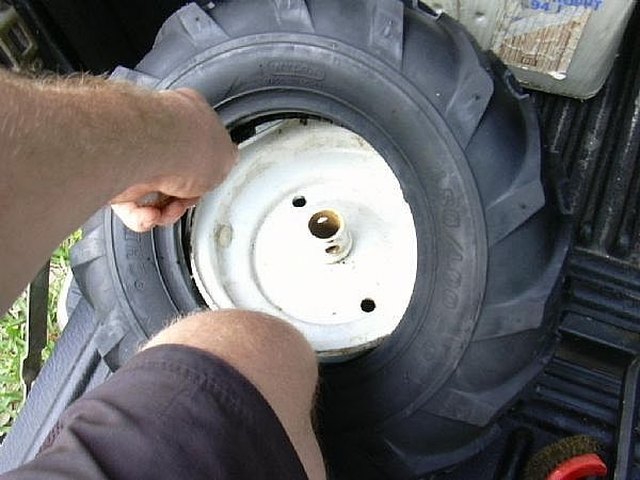One of the most difficult parts of the tractor maintenance and repair is replacement of its tire. It requires special equipment, technique and the work itself has to be carried very safely. The safety risk is very higher as compared to removal and replacement of tires of other vehicles. This is the reason that tractor tires are made to last longer, as they cannot be easily replaced too frequently. Make sure you have all the required equipment and safe place to carry out the project, and let no one hover around while you work.
1
First of all make sure you park the tractor at a safe place. The place can be your garage or any part of a road extension, where there is no vehicular and human traffic. The place especially should be free of children presence.
2
Have all the necessary equipment ready. For example, you will need a bead breaking tool. So have it with you and some other tools as well. Be assured you are carrying out removal of tractor's big tire, and if you do not know how to do it yourself, it is always better to have the job done professionally from the garages, where they also have purpose build machines.
3
You will need a pneumatic bead breaking tool. Make sure you follow manufacturer's instructions while using all the equipment. Do not make any adjustment on your own, as it cannot let you carry out your work successfully and quickly.
Do not make any adjustment on your own, as it cannot let you carry out your work successfully and quickly.
4
Next step is the breaking of the bead. Bead refers to the task how the tires is set on the rim and you will need to break it to remove the tire. Breaking of the bead takes special skills and technique. Nevertheless, by exerting force on the side of the tire you can break the bead open and then remove the tire. For this part of the job you will need a derimmer. So use it while carrying out the task. A simple way of breaking the bead is exerting of force on one side of the tire. However, you should be careful while exerting the force and never let lose your balance. It can be very risky.
5
At last, actuate cylinder on the rime derimmer to remove the rim. This makes your job almost done but make sure you inspect the rim soon after removal. This is to see if the rim has been damaged while the tire was being removed, and if it has, you will need to get it fixed before reusing. Now, you can safely replace the tire of the tractor, and the execution of work is almost similar to the removal of tire. The work is very hectic, so take your time for its completion.
This makes your job almost done but make sure you inspect the rim soon after removal. This is to see if the rim has been damaged while the tire was being removed, and if it has, you will need to get it fixed before reusing. Now, you can safely replace the tire of the tractor, and the execution of work is almost similar to the removal of tire. The work is very hectic, so take your time for its completion.
Tractor Agriculture will brief a topic called How to Change Tires on Rim. My Father taught me the different preventive techniques that are handy while working in farms. My keenness to learn resulted in such a plethora of knowledge inside me.
The working on farms is not an easy task and requires thorough knowledge to do the work in an apt manner. You have to be a complete farmer in all aspects i.e. you should know how to take care of your Tractor Tires, Farm Tractors, Farm Machinery and Implements. People have too many doubts in their mind like:
How To Change Tires on a Rim – Download Slide
There are different types of tractor tires available in the market and it becomes all the more important to know about different ways to take care of these big sized tires while working in the fields.
One of those learning event is being shared by me today. This is very important process and changing, removing process should be carried out with proper care by any individual.
There are different ways to remove or replace a tire form a wheel or a rim.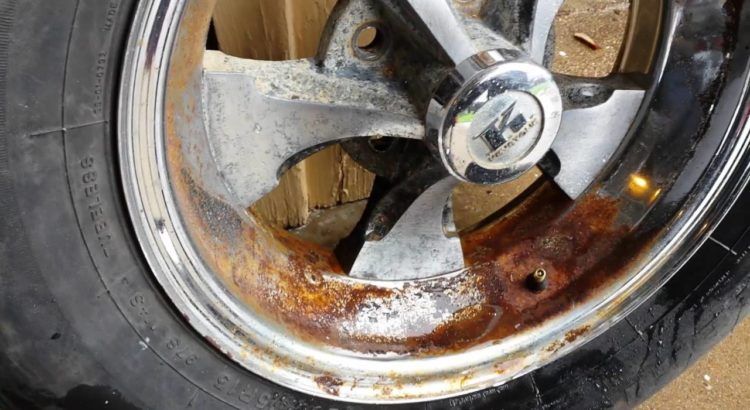 Whether you need to change tires of car, trucks, tractor etc, these tips will prove to be useful. Let us learn the apt technique to change tires and then precautions that needs to be taken while removing tyres.
Whether you need to change tires of car, trucks, tractor etc, these tips will prove to be useful. Let us learn the apt technique to change tires and then precautions that needs to be taken while removing tyres.
This is very important and everyone should know the right time to execute this process. The changing of tires can be done easily at home or any place. This is not a rocket science and changing tires is a very easy work routine. Let us learn different steps required to change tires:
 The deflation of wheels should happen after the removal of valve through a valve die.
The deflation of wheels should happen after the removal of valve through a valve die.The basic steps to change tire has been explained above. There are few precautions that have to be followed while changing tires.
There are few precautions that have to be followed while changing tires.

Tractor Agriculture has given a simplified approach towards steps needed to change tires. All these tips and tricks work wonders when applied practically and save the time. Keep yourself updated as we are going to publish Agricultural Implements based topics in the upcoming articles.
Another season of changing shoes is approaching. And you may remember that on one of the tires after the last winter/summer there is a jamb - a small bump. I don’t want to run to the store for the sake of one new tire. We understand. Or maybe it looks even better if repaired?
Yes, not every wheel that has met with a nail, rebar sticking out of the ground or a sharp stone on the road is considered damaged. Everything, of course, depends on the scale of the damage and its location on the tire itself. Some are easily repaired, while others are simply impossible to do - the tire can only be sent to the trash.
Everything, of course, depends on the scale of the damage and its location on the tire itself. Some are easily repaired, while others are simply impossible to do - the tire can only be sent to the trash.
A bulge on a wheel, referred to by drivers as a bump or bulge, is the most common tire sidewall defect. It appears due to a collision with an obstacle or after falling into a pit, more often at high speed. The threads of the sidewall carcass are easily damaged by impact, and the tire at this point can no longer hold the load and air pressure - swelling appears. A small bump sooner or later turns into a big one, and driving with such a defect is dangerous - the wheel can shoot at any moment. At high speed, this is fraught with loss of control, departure from the road and a rollover.
The quality of roads in Kazakhstan contributes to the appearance of bulges on tires
Some types of bulges are repairable, although this is a temporary measure.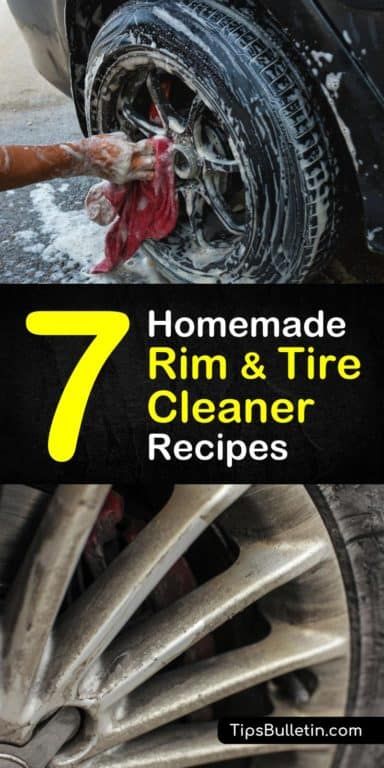 Not a single patch can restore the factory rigidity. Ideally, change the tire.
Not a single patch can restore the factory rigidity. Ideally, change the tire.
Special cord patches can extend the life of a tire with a herniation, even if the swelling has appeared on the tread. The sidewall is a different story. If the swelling appeared at a distance of more than 40 mm from the side, it can be repaired. If not, then the wheel needs to be replaced. Blisters on low profile tires are most often non-repairable.
For maximum safety when riding with a repaired bump, insert the tube. This is an inexpensive and reliable solution. On our market, you can find cameras made in China and Russia, the latter are slightly more expensive, but also of better quality.
The elimination of a side cut is a serious operation, therefore, as in the case of a bump, you will have to go to the professionals. We need cord patches, fortunately in our time they are of different sizes and with a different number of layers. And if you do it wisely, then you can't do without special tools and vulcanization.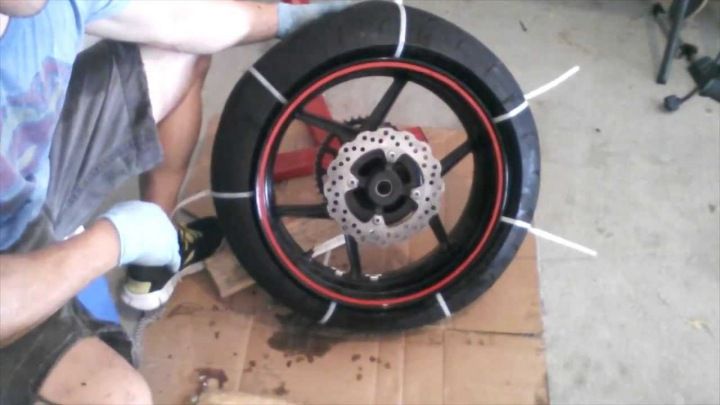
A cut, by the way, cannot be healed in all cases. If the gap is in the shoulder area of the tire, it is unlikely that anyone will undertake to repair it, since no guarantees can be given here. However, our Kulibins take on even the most difficult cases, cutting out parts of the sidewalls from the tires and even weaving the cord on their own.
Tire overhaul. We would not put such a wheel on ourselves
Low profile tires can be repaired, but more difficult. A tear in the sidewall is easier to seal on tires with a medium or high profile.
Sometimes a cut is confused with a pluck. This is when the outer layer of the sidewall caught on something sharp, a tear formed, but the frame itself remained intact. There is nothing wrong with that, although the drivers at the tire fitting company successfully repair the cut, for which they take it accordingly.
If a piece of rubber remains on the sidewall, then glue it with ordinary superglue (101st). If it came off, then it is better to cover it with raw rubber and vulcanize. Leaving the pluck bare is not recommended, because the tire carcass, often consisting of a metal cord, will quickly corrode.
If it came off, then it is better to cover it with raw rubber and vulcanize. Leaving the pluck bare is not recommended, because the tire carcass, often consisting of a metal cord, will quickly corrode.
In Europe, defective or used tires are perforated before being sent for scrap to prevent their resale and possible operation. But they don’t know that we have such holes on the sidewall patched once or twice
Cuts and hernias are not the only possible damage to the side of the tire. You can also spoil the side ring, in the process of changing shoes, for example. If it’s for garlic, then such a tire is already dangerous. Sooner or later, the tire pressure and the load in motion will start to squeeze the rubber off the rim - a wheel explosion can occur.
This ailment is repaired if the wire ring - the base - is intact. There are no special technologies and materials to correct this particular problem, but most often craftsmen use a two-component composition for chemical (also called cold) vulcanization. After mixing, the mass is pressed into a fat-free damage. Compound manufacturers recommend waiting 72 hours before mounting a tire. Of course, our masters do not pay attention to this condition - they put the tire right away. And it’s good if the wheel is flat because of this at night in the parking lot, and not on the road.
After mixing, the mass is pressed into a fat-free damage. Compound manufacturers recommend waiting 72 hours before mounting a tire. Of course, our masters do not pay attention to this condition - they put the tire right away. And it’s good if the wheel is flat because of this at night in the parking lot, and not on the road.
If the side ring tears are barely noticeable, but the wheel is still flat, then you can use a special liquid - a bead seal designed to seal a tubeless tire.
These seals have been used in motorsport for some time. In particular, in the American Formula D Drift Series, drivers used compounds to keep the tire on the rim even with minimal tire pressure. Now they are banned.
Pay attention to the left rear wheel of the Nissan Silvia S13. Due to too low pressure, it was literally taken off the disk under load
Every schoolchild has faced this problem when patching the inner tube of his bike after hitting something sharp. Repairing a car tire puncture with your own hands will also not be difficult even on the road. But for this you will need a pump (or compressor) and a universal tire repair kit with harnesses. All this is sold at any car market or gas station.
Repairing a car tire puncture with your own hands will also not be difficult even on the road. But for this you will need a pump (or compressor) and a universal tire repair kit with harnesses. All this is sold at any car market or gas station.
Repairing a tire on the side of the road with harnesses
The process is simple. If we are talking about the front wheels, then in most cases the wheel can not even be removed, it is enough to turn the steering wheel in the right direction, find the puncture site and carry out repairs. First, the hole is cleaned with a helical awl from the set. The tourniquet itself is smeared with glue and tucked into the eye of the awl, after which it is inserted into the tire hole. With a sharp movement, the tool is removed, and the tourniquet remains in place and clogs the hole. The tails are cut with a knife, but not at the root, it is recommended to leave about 20 mm. The tire is inflated and checked.
Sometimes a nail or self-tapping screw clogs the hole by itself, remaining in it. If you see a hat in a tread, do not rush to pull it out. While the pressure is holding, move to vulcanize. And sometimes they drive with a screw in a tire for weeks.
If you see a hat in a tread, do not rush to pull it out. While the pressure is holding, move to vulcanize. And sometimes they drive with a screw in a tire for weeks.
Repair of a puncture at a tire shop
Punctures are also repaired with harnesses at a specialized service, although among professionals such repairs are not considered long-term. After a few months, the flagella dry out and can let air through. There are more advanced methods like cold and hot vulcanization. The latter is more reliable. In this case, the hole is sealed with an elastic patch, and the funnel from a foreign object is filled with a special compound. After that, a vulcanizer is put on the tire, it heats up the rubber and solders it.
In addition to the plaster, the puncture is also repaired with special cord fungi. Craftsmen process the puncture site: drill it and treat the surface with a tool to roughen it. Then the repair area is lubricated with glue (it is also called cement) and a fungus is introduced. This is done from the inside of the tire. The cap of the fungus is rolled, and the excess legs are simply cut off from the outside.
This is done from the inside of the tire. The cap of the fungus is rolled, and the excess legs are simply cut off from the outside.
Puncture repair with sealant
With the advent of tubeless wheels, and later run flat tires, many automakers began to abandon spare wheels. Instead, repair kits with compressors are supplied with the machines. A repair kit is essentially a bottle of pressurized sealant. Later, such spray cans began to appear on the shelves of ordinary car dealerships.
This method has not taken root in the CIS, because the condition of the roads makes it necessary to have at least a stowaway in the kit, but it can also be considered as a method of repair on the road.
The car must be jacked up and sealant must be pumped into the damaged wheel through the nipple. Next, you should spin the wheel, then pump it up, lower the car and drive a few hundred meters. If the tire tightness has not been restored, repeat the procedure.
If the tire tightness has not been restored, repeat the procedure.
For commercial vehicles, cutting the tread with a special device (regrower) is a common thing. Moreover, such tire retreading is provided by the factory (marked REGROOVABLE on the sidewall) to increase the service life. But there are entrepreneurs who undertake to deepen the grooves in tires for passenger cars. But they are not intended for such an operation. Often this is how used tires for sale are “refreshed”. Be careful!
What is the danger?
The worst option is that the retreaded tire will shoot out on the road, as the master can damage the undertread layer when deepening the grooves. Such a tire will not be able to hold pressure at some point. There will be a boom! At best, the tire will indeed last a little longer, but is the game worth the candle? We think it's not worth it.
How is cutting made?
A regrower is used to cut the tread. Roughly speaking, this is a large soldering iron with interchangeable tips of various shapes. It goes through rubber like a knife through butter.
Roughly speaking, this is a large soldering iron with interchangeable tips of various shapes. It goes through rubber like a knife through butter.
If the tire is for passenger cars, then it is worth taking on a regrower only in one case - when part of the tread pattern was welded with "new" rubber during repair. This is where threading comes in handy in order to restore the grooves and symmetry of the tread.
Vehicle operation is prohibited if:
- tires have a residual tread height of less than 1.6 mm;
- tires have punctures, cuts, ruptures that expose the cord, as well as delamination of the carcass, delamination of the tread and sidewall;
- tires in size or load capacity do not match the car model;
- tires of various sizes, designs (radial, diagonal, chamber, tubeless), models, with different tread patterns, winter and summer, studded and non-studded, new and restored, are installed on one axle of the car;
- Tires retreaded according to the second repair class are installed on the front axle.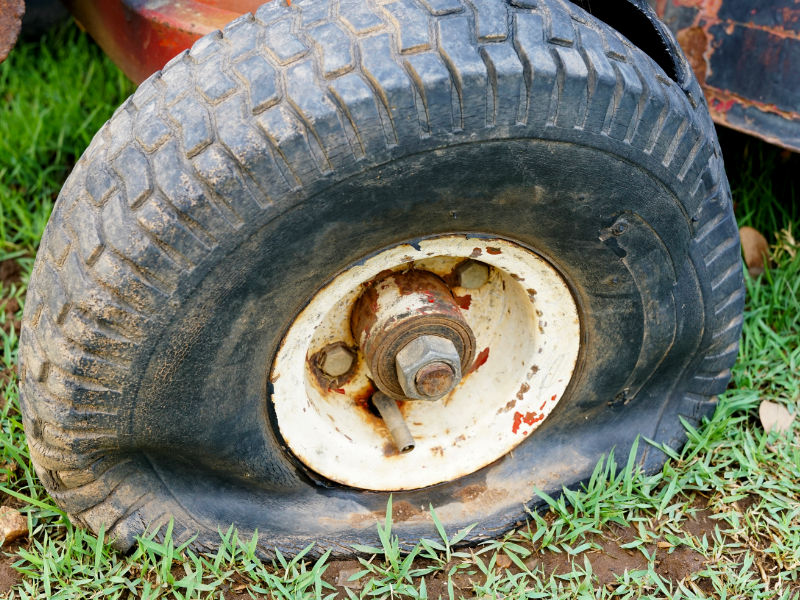
What is a second class repair?
This is the case when the carcass of the tire is restored after serious damage. A side cut (or tear) is a serious damage to the tire carcass.
Use and store tires in accordance with the rules for operating tires for tractors and agricultural machines.
Only fit tires, inner tubes and rims that are in good working order and of the correct size and type (Fig. 20). The rims must not have mechanical damage, bends, crumpled edges, burrs, must be cleaned of rust and painted. Tires must be clean and dry. Sprinkle with talcum powder before mounting tires and tubes.
Mounting and dismounting of the tractor wheels is carried out by two workers using two mounting blades.
The first blade is a lever, one end of which is made in the form of a fork and serves only to remove the tire beads from the rim shelves, and the other end serves to mount the tire. The second blade has one end in the form of a curved profile, which provides a reliable grip on the rim flange, as well as the removal of the tire beads from the rim shelves in tandem with the fork end of the first blade, the other end is a socket wrench for the locking screw of the hydraulic jack. When mounting the tire, pay attention to the fact that when installing the wheel on the tractor, the direction of rotation of the wheel coincides with the arrow on the tire. Mounting and dismounting, insertion of the tire beads are possible only when the diametrically opposite part of the tire with respect to the refueling bead is recessed into the rim stream. Applying a soapy solution to the tire beads during mounting and dismantling greatly facilitates mounting and dismounting, and increases the service life of the tires.
Fig. 20. Tire, chamber and wheel rim of the tractor
Mount the tire on the rim in the following order (Fig. 21):
the tire bead has entered the rim creek;
2) Insert the first spatula between the top bead and the rim so that the curved end securely grips the bead and, acting as a lever, slide the bead to be mounted over the rim flange. Repeat this operation several times until the installation of the mounted board does not cause difficulties;
3) use a second spatula to facilitate further assembly. Insert it between the tire bead and the rim and press the rim up, insert the other blade closer to the wound tire bead and repeat the previous operation. Sequentially moving along the circumference, repeat this operation several times until the rim flange enters the tire cavity;
4) drive the last section of the rim into the tire by gently pressing two paddles simultaneously;
5) place the tire obliquely against the wall, press the rim against the wall so. so that the cavity of the tire is completely freed, and, taking the chamber from the side of the valve, insert it into the cavity of the tire;
so that the cavity of the tire is completely freed, and, taking the chamber from the side of the valve, insert it into the cavity of the tire;
6) insert the valve into the valve hole and secure it with a nut, while making sure that the valve is in the correct position, do not allow it to be tilted: Put the inner tube completely on the rim, push the rim towards you and inflate the inner tube to exclude the possibility of pinching the inner tube between the tire beads and rim;
7) put the tire on the floor. On the opposite side of the valve, insert both mounting blades at a distance of 250-300 mm from one another so that they securely grip the rim flange, and, pressing the blades down, slide the tire bead over the rim flange;
8) holding one paddle in this position, pull out the second paddle and insert it at a distance of 50-100 mm from the first one so that it captures the bead, and, pressing the paddle down, push the tire bead over the rim bead. Mounting is greatly facilitated if you press the tire with your foot at the same time. In order to facilitate the process of inserting the upper bead of the tire, sink the part of the tire opposite to the refueling bead into the rim stream with your feet;
In order to facilitate the process of inserting the upper bead of the tire, sink the part of the tire opposite to the refueling bead into the rim stream with your feet;
Fig. 21. Fitting the bar
9- installation ends at the valve with two blades;
Fig. 22. Removing the tire
Inflate the tire to normal pressure, then completely deflate the tire and inflate again to a pressure of 0.28 MPa (2.8 kgf/cm2), maintaining this pressure until the tire beads land on the rim shelves; then let the air out until the recommended tire pressure is reached. Inflate tires in a protective mesh (zone).
Remove the tire from the rim in the following order (Fig. 22):
- let the air out of the tire completely;
- Remove the tire beads from both tapered rim flanges using the fork end of the first blade and the curved end of the second blade. Remove the beads first from the shelf opposite the valve hole, in the following order:
1) insert the bent end of the second blade between the rim bead and the tire and press the tire bead down;
2) insert the forked end of the first blade into the gap formed between the rim flange and the tire so that the bent end of the second blade is in the groove of the fork blade;
3) Press the tire bead down with the first mounting spatula.